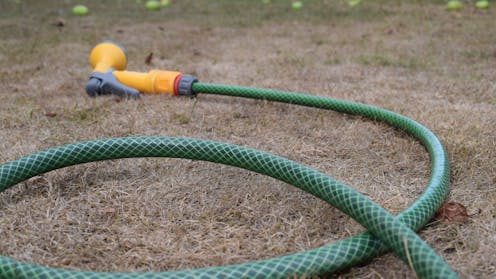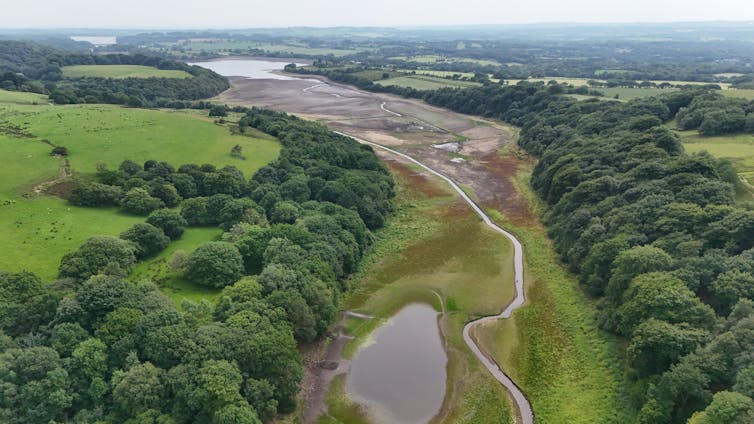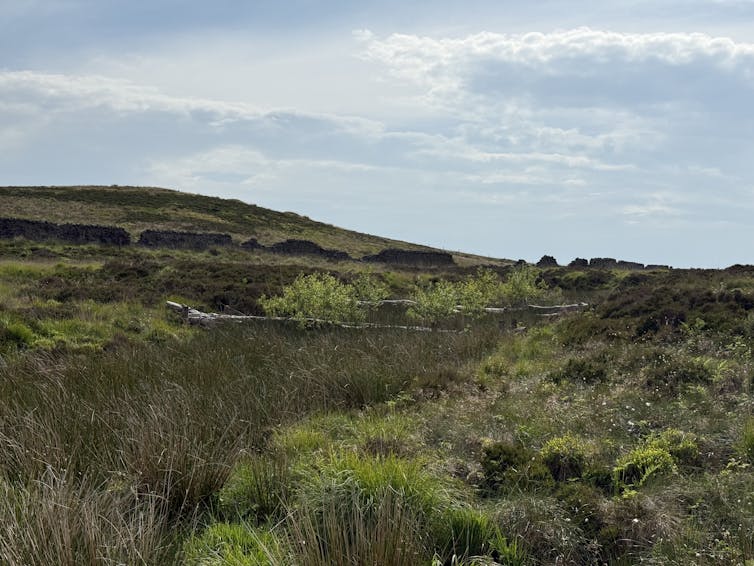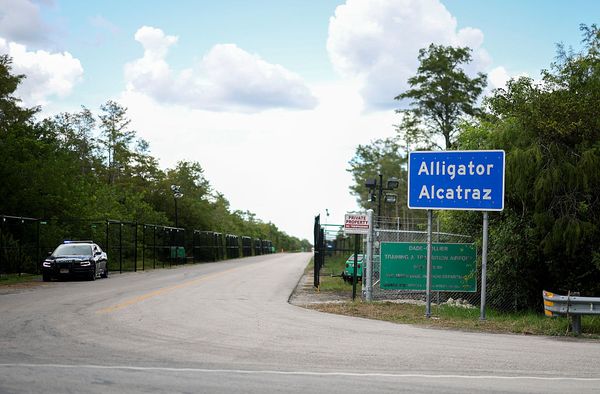
As Britain’s first heatwave of 2025 hits with temperatures climbing above 30°C, Yorkshire has joined the northwest in official drought status.
This spring has been the driest in the UK since 1893. May’s rainfall was 43% lower than the long-term average. Fish rescues have already taken place in Shropshire as rivers dried up. Low water levels have made it difficult for boats to navigate along some canals.
Water companies in regions such as Hampshire, Yorkshire and Cumbria are encouraging residents to conserve water.
Years of drainage, overgrazing and peatland degradation have turned much of the UK’s uplands into fast-draining systems. Rainfall that once infiltrated slowly now rushes off hillsides, filling rivers quickly, before vanishing just as fast.
Get your news from actual experts, straight to your inbox. Sign up to our daily newsletter to receive all The Conversation UK’s latest coverage of news and research, from politics and business to the arts and sciences.
Even after a year of exceptional rain and flooding, the soils and ecosystems that should be buffering us against drought are depleted. This recent spell of dry weather has exposed just how fragile the system has become.
The UK government reconvened the national drought group – a coalition of its most senior decision-makers, Environment Agency, water companies, plus key farming and environmental groups – on June 5 to address growing concerns as reservoir levels which are at 77% of capacity nationally.
Water availability remains under pressure across much of England. Sources in the northwest Pennines, Haweswater and Thirlmere in the Lake District, which supply much of the northwest, are currently at around 50% of capacity. Normally, they would be around 75% full. In Yorkshire, these water levels are currently around 60%.

But landscapes can be restored in ways that reduce both flood risk and the effects of drought. At Smithills Estate near Bolton, the Mersey Forest (Cheshire and Merseyside’s community forest), conservation charity Woodland Trust and the Environment Agency have spent the last decade restoring 1,700 hectares of upland.
They have blocked old drainage channels, rewetted peat bogs, planted trees, improved soil structure and adapted farming. These changes (often referred to as natural flood management) allow the land to hold water longer, slow its release, and sustain the flow of water in rivers during dry periods that can help water conservation and reduce the risk of floods.
Restoring rivers
We both grew up in the shadow of the moorlands around Rivington and Smithills in Bolton. We built our careers restoring rivers and their catchments and want to prevent “water-stressed” situations where water demand exceeds the available supply. We continue to study the implications and resilience of natural flood management here in the UK and overseas.
At Smithills, restored bogs act like sponges, soaking up rain and releasing it gradually. Newly planted woodland supports biodiversity, encourages water infiltration and provides shade, which reduces evaporation. Natural flood management has slowed water down across the catchment, helping to reduce peak flows during storms by 27.3% and has boosted river flows during dry spells by storing and slowly releasing water by 27.1%.

Tree trunks laid across the gullies have kept areas of Smithills wet throughout spring, creating valuable habitat and supporting water resilience in the landscape. We’re working with partners to monitor natural flood management benefits and expand restoration, while also exploring new questions.
These include how the structures influence greenhouse gas emissions through wetting and drying cycles, affect sediment capture and storage, and how their function changes over time. This research is helping to shape how nature-based solutions are understood, valued and adopted more widely.
Mitigation (tackling the root causes) and adaptation (adjusting systems and behaviours) to water stresses require landowners, water companies, local authorities, regulators, environmental groups and communities to work together to deliver shared outcomes.
But this effort needs to be matched by an understanding that changes in how land is managed too. If the landscape continues to shed water rapidly, reservoirs will struggle to recover even when rain does arrive. We need to slow the flow of water and rejuvenate the lost natural processes at large scales through restoration.

The UK will face water shortages within the next decade unless urgent action is taken. The recent Independent Water Commission, set up by the UK government to recommend a major overhaul of the water sector’s planning, regulation and infrastructure, highlights the importance of nature-based solutions, such as restoring natural processes like river flow and wetland function, alongside natural capital investment.
This involves putting money and resources into the protection, restoration or enhancement of nature, to secure long-term benefits such as clean air, water purification or flood protection.
Nature-based solutions can be scaled up quickly, plus they benefit people and the environment. Local communities can also get involved in meaningful restoration work. At Smithills, volunteers plant trees and help monitor the benefits of natural flood management, including changes in water quality, water levels and biodiversity. Farmers are exploring regenerative grazing.
Schools use the estate for environmental learning. This is not only about resilience – it is about reconnecting people with the natural landscapes that surround them.
To avoid routine hosepipe bans, protect biodiversity and secure food and water supply into the future, land needs to be at the centre of the UK’s drought strategy. Restoring bogs, woodlands and soils is not a luxury. It is essential infrastructure in a changing climate.
Don’t have time to read about climate change as much as you’d like?
Get a weekly roundup in your inbox instead. Every Wednesday, The Conversation’s environment editor writes Imagine, a short email that goes a little deeper into just one climate issue. Join the 45,000+ readers who’ve subscribed so far.
Neil Entwistle has received previous funding from British Council, Universities UK, NERC for work related to river restoration and climate resilience. He also works for a boutique fund manager, to fund and deploy solutions to some of the most pressing Nature-related challenges our economy faces today.
Neil Macdonald receives funding from DEFRA through the Natural Flood Management Programme (https://www.gov.uk/guidance/natural-flood-management-programme).
This article was originally published on The Conversation. Read the original article.







